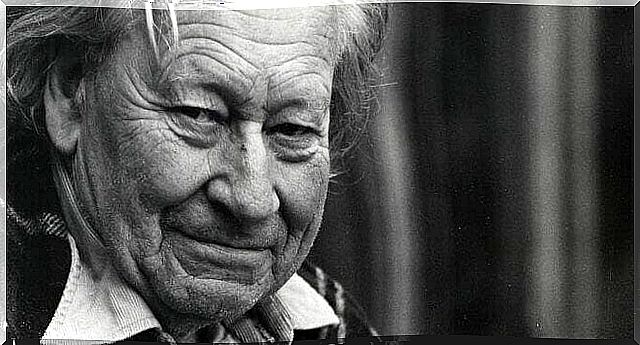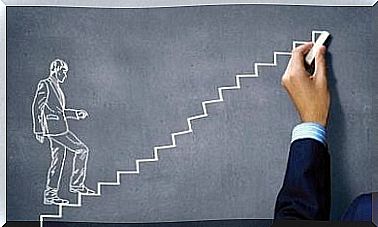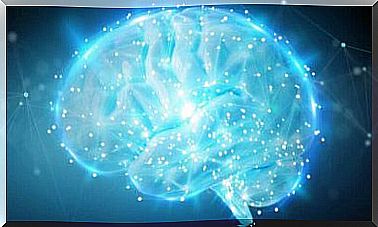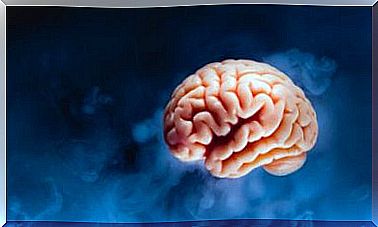The Double Link Theory Of Gregory Bateson

The double bond theory was invented and developed by anthropologist Gregory Bateson and his research team in Palo Alto, California (1956). It fits into the systemic perspective and refers to communication situations in which contradictory messages are received.
This theory was formulated to explain the psychological origin of schizophrenia, leaving aside brain dysfunctions and organic hypotheses. The schizo phrenia remains one of the most disturbing mental illnesses. Indeed, many theories have been formulated as to its origin, some of an organic or biological nature and others of a social nature. Let’s take a more in-depth look at what the double link theory is all about.
Brief presentation of Gregory Bateson
Gregory Bateson was born in Grantchester, UK on May 9, 1904. He was an anthropologist, sociologist, linguist, and cyberneticist whose work had repercussions in many other intellectual fields. Some of his most remarkable writings are reflected in his books Towards an Ecology of the Spirit (1972), Nature and Thought ( 1979) and The Fear of Angels: Epistemology of the Sacred ( 1987).
Bateson and some of his collaborators, such as Jay Haley, Donald Jackson, and John Weakland, were pioneers in the development of the systems perspective. Indeed, he is recognized in academic circles as a cult figure whose appeal includes his dark side, eccentricity, and diversity of success. However, the growing interest in holism, systems and cybernetics naturally prompted educators and students to publish their work.
Communication, for Bateson, was what makes human relationships possible – in other words, something like their mainstay. From his point of view, this includes all the processes by which a person influences others. Consequently, the media become a determining component of the social structure which deserves to be analyzed.
Thus, Bateson considered it necessary to eliminate the double bond that appears sporadically in communication. He even said that this phenomenon is found constantly on television. For example, one program emphasizes a moral value while another violates it, which generates conflicts in the mind of the viewer, especially when it comes to children or people with a weak critical sense. .

What is a double link?
According to Bateson, a double bond is a communicative dilemma resulting from the contradiction between two or more messages. Therefore, no matter what is done, any choice is a mistake. A communicative situation that causes suffering and can lead to psychological disorders.
Let’s explain this through an example. A child tries to interact with his mother, who suffers from emotional difficulties. The latter tells him how much she loves him, but at the gestural level, the child only receives signs of rejection. Therefore, the message that the mother expresses verbally does not match the message that her body sends to her son. So he finds himself caught in a contradiction involving affection and rejection.
Another example would be the famous “be spontaneous” statement. A double message of impossible accomplishment: if the person is not spontaneous, he does not do what is asked of him, but if he conforms to it, he does not however accomplish it either because he does not is not spontaneous as such, since obeying does not imply any spontaneity.
The double link theory
The double link theory is based on the analysis of communications, and specifically on Russell’s logical type theory. The situation called “double bond” derives from this theory and from observations made with schizophrenic patients. As stated earlier, in such a situation a person, no matter what they do, cannot act adequately.
Bateson said that someone caught in the double bond can develop schizophrenic symptoms. The central thesis of the double bond theory is that there is a discontinuity between a class and its members, since the class cannot be a member of itself. One of the members also cannot be the class since the term used for the class is of a different level of abstraction.
In the pathology of real communications, this discontinuity is continuously and inevitably shattered. Likewise, pathology occurs in the human organism when certain formal patterns of this rupture appear in communication between mother and child. This pathology is classified as schizophrenia, a serious mental disorder, psychotic type, which manifests itself in impaired thinking and language.

Ingredients necessary for the manifestation of the double bond
The necessary ingredients for a double bond situation are as follows:
- Two or more people. One of them is the “victim”. The double bond is not meant to be inflicted by the mother alone. It can be done from the mother alone or from a combination between the mother, the father and / or the siblings.
- Repeated experience. The double bond is a recurring theme in the victim’s story. This is not a single traumatic experience, but an experience so often repeated that the double bond structure becomes a habitual expectation.
- A negative primary mandate. It can have one of two forms: “don’t do this, or I’ll punish you” or “if you don’t do this, I’ll punish you”. The learning context is based on the avoidance of punishment and is not a reward-seeking context. Punishment can be manifested by the withdrawal of love or by the expression of hatred or anger. More devastating still, it can take the form of an abandonment resulting from the expression of the extreme helplessness of the progenitor.
- A secondary mandate in conflict with the first on a more abstract level reinforced by punishments or signals which announce a danger to survival. The verbalization of the secondary mandate can take different forms. For example: “do not consider this as a punishment” or “do not take into account my prohibitions”. There are other examples where the double bond is inflicted by two individuals. For example, one parent may refuse at a more abstract level the mandate of the other.
- A negative tertiary mandate that prohibits the victim from escaping from the camp. It may be unnecessary to classify this mandate as a separate item. If double bonds were imposed during childhood, it is naturally impossible to escape.
According to the Double Link Theory, this complete set of ingredients is no longer necessary once the victim has learned to perceive their universe under the models of the Double Link. Almost any part of a double link sequence can be enough to generate panic or anger.

The effect of the double link
The double bond effect suggests that there is a collapse in the individual’s ability to distinguish between Logical Types or modes of communication whenever a double bond situation arises. This situation has general characteristics:
- The individual is involved in an intense relationship. He feels that it is very important in the relationship to correctly discriminate what type of message is communicated to him.
- The individual is caught in a situation where the other people who intervene express two orders of messages, one of which contradicts the other.
- The person is unable to comment on the messages that are expressed to correct their discrimination in the order of the messages to which they must respond. In other words, she is not in a position to formulate a meta-communicative utterance.
Bateson’s double bond theory had no real influence in explaining the cause of schizophrenia, but it did point out the importance of communication and family patterns in mental health. Although the double bond hypothesis has become obsolete in this sense, it has been instrumental in the evolution of systemic therapy.
Bibliographical references










